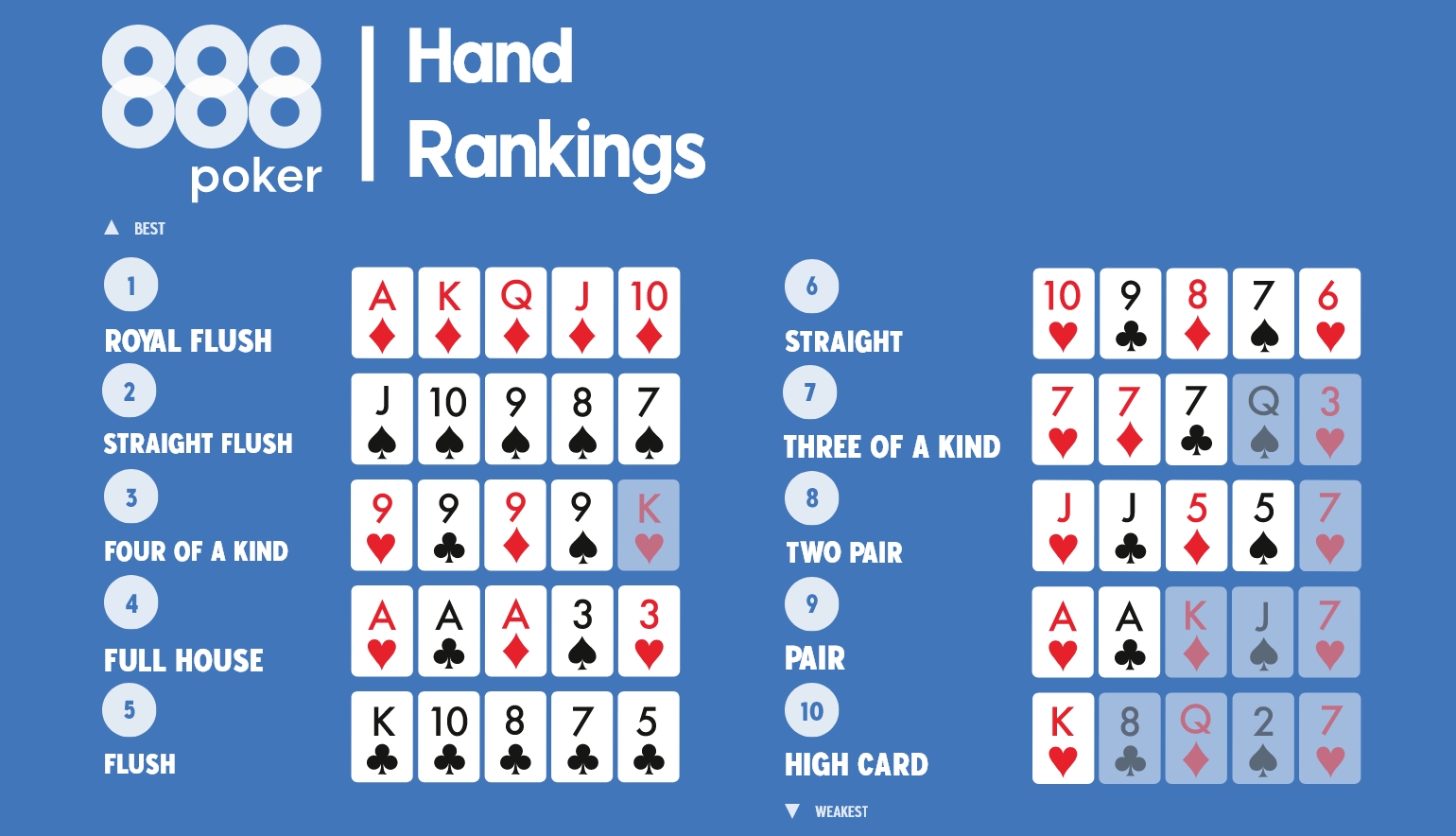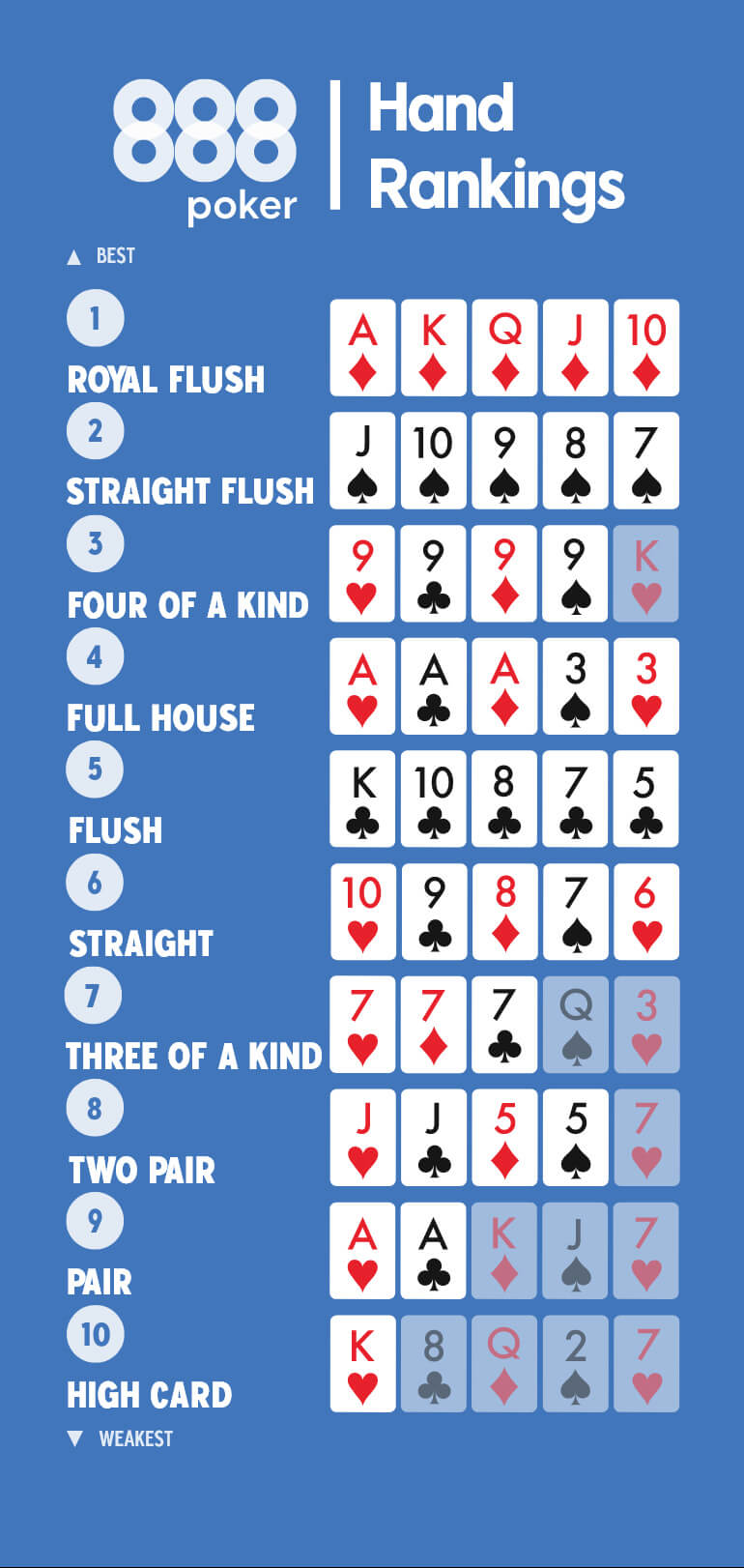“It takes a minute to learn, but a lifetime to master.”

“It takes a minute to learn, but a lifetime to master.”
That’s the old saying about the game of poker. If you’re interested in learning how to play poker, you’ve come to the right place.
We are trying to keep things simple as we explain the poker rules and dynamics that determine how to play.
We’ll be using No-Limit Texas Hold’em, the most popular form of poker, as the prime example, and touch upon some other variants to give you an idea of what they are.
Among the topics we’ll cover are:
The goal of cash games is to win money, in tournaments you want to be at the top of the chip leader-board to claim the big prizes. They work a little differently and will be covered in more detail later. The aim is the same, have the best hands at the right time to win the pot.
To win at poker, you either have to bluff your opponents or hold the best hand at the end (aka the “showdown”). In poker, you’re looking to make the best possible five card hand. Your holdings can range from a high card up to a Royal Flush.
Here’s a look at the best possible hands that can be used in standard poker rules, in descending order:

This is going to be a rough guide on how to play a hand using poker rules, with an example listed below. A hand of No-Limit Texas Hold’em begins with each player receiving two cards facedown, called “hole cards.”
Players will always have these options when it’s their turn to act: bet, call, raise or fold.
Players can win a hand by using any combination of their two-hole cards and five community cards on the board to form the best five card hand.
Remember, after players receive their cards, a round of “preflop” betting occurs. Each “street,” or round after that, has a different name.
Flop – The first three community cards dealt are referred to as “the flop”. All remaining players can use these community cards to try and make the best poker hand. Play continues with a round of betting. The action starts with the first player still in the hand who is to the left of the dealer button.
Turn – After completing the round of betting on the flop, another community card is dealt, called the turn (AKA Fourth Street). A total of two hole cards and four community cards are available for active players to try and make the best five-card hand.
Another round of betting takes place. Again, the action starts with the first remaining player seated to the left of the button. Play always continues in a clockwise direction. When all remaining players have acted, the betting round ends.
River – The river (AKA Fifth Street) is the fifth and last community card. A final round of betting takes place. If there’s a showdown – the point where all action is complete – players turn up their hands. The last player to bet, known as the last aggressor, must show first. Whoever holds the best five-card hand wins the pot, This action completes the hand, moving on to a new one.
Example: In a $1/$2 No-Limit Hold’em game, you are first to act after the big blind (more on the blinds below). You are facing a $2 “blind” bet, So, you can either call that amount, raise it, or fold.
Let’s assume you raise to $6 holding the A♦K♣. Everyone else folds around to the player in the big blind, who puts in the extra $4 to call.
The flop comes down A♣5♠6♥ . The player in the big blind is first to act and can either check or bet. There’s no need for the to fold as there is no bet. They wind up checking, and you bet $10 with your top pair.
The player in the big blind calls and the K♦ turns. Again, your opponent checks. You bet $25 with two pair. The big blind calls once more and the 2♣ completes the board on the river.
Your opponent checks, for a third time, and calls when you bet $100.
The action is over, so it’s time to show your cards.
You turn over your two pair (your A♦K♣ plus the A♣K♦6♥ on the board make your best possible five-card hand).
Your opponent shows he was beat as he only had the A♥Q♠ for a losing pair of aces. (Their A♥Q♠ plus A♣K♦6♥ from the board gives them their best possible five-card hand.)
Congratulations, you won a nice pot!
So that’s how a hand works, and you know the poker rules for it, where it gets complicated is how you play your own hand and compete with others. There are a few more things for you to pay attention to, like where the dealer is sitting.
In most games, a dedicated dealer facilitates the dealing. In home poker games, it’s not uncommon for players to rotate the deal among themselves.
If there is a dedicated dealer, a button indicates who has the deal. That button then moves one spot clockwise after each hand. The purpose of the button is to identify where the action should begin each time.
The action always starts with the first person left of the button.
Before any cards are dealt, the player to the direct left of the button must post (pay) the small blind. The player to the left of him must post the big blind.
These “blinds” are forced bets that help give players something chase. Think about it: If there were no blinds in poker, players would never “blind off”. They would never lose chips from always folding preflop.
Players would wait until they had Aces dealt to them, and then go all-in.
For example, if the game was $1-$2 No-Limit Hold’em, the player to the direct left of the button must post a $1 small blind. The player after that has to pay the $2 big blind. These are mandatory “blind bets” and must be posted. If a player refuses according to poker rules, they must sit out of the game.
When you play poker against other players, you do so in one of two formats – tournament or cash game (AKA ring game) and these each have their own unique poker rules.
The basics outline above are the same, but there are four significant differences.
Antes are merely used to boost the size of the pot preflop. They give players more incentive to fight for the dead money in the middle.
Do note that either “button” or “big blind” antes (one larger-sized ante taken from one player) are replacing traditional antes to save on time. This format is happening especially in tournaments to move the pace of the game along.
As the blinds rotate at the end of each hand, all players will be subject to a button ante, every orbit.
In poker, the aim is to put together the best hand of five cards, or cause your opponents to fold. The key in this game is reading the other players, strategy and making good bets. You’ll need to get familiar with hand rankings and understand when to bet, raise, check or fold, as well as general poker terminology – which will come in handy in growing your skill and confidence as a player.
Once the betting stage is finished, the players show their cards. The pot is won by the player with the best five-card hand. If two players end up with the same hand, the pot is split. And if all other players fold? The last player standing takes the whole pot without having to reveal any cards.
Yes. In tournaments, blinds go up throughout the game and players play until they win or run out of chips. In cash games, the blinds don’t change and players can leave when they like.
Betting works differently depending on the specific poker format. With Pot-Limit, the bet can’t exceed the amount in the pot, in Fixed-Limit, players are given fixed bet and raise amounts, however with No-Limit, players can go all-in whenever they choose. Regardless of the format, knowing the right time for a big bet or a fold can make the biggest
Not at all. There is no requirement to use all, one, or even any of your hole cards in Texas Hold’em. You can even use just the five cards on the board if they happen to be the best hand.
It depends. If the card is accidentally exposed when it’s being dealt, it is replaced with the next one in the deck, and the card that was exposed becomes the burn card. However if a player accidentally flashes a card mid-hand, the game just keeps going (with their opponents having a little extra info).
Moving the dealer button to the next player each hand ensures that everyone at the table has an equal opportunity to act last (a strategic advantage). The small and big blinds are posted by the two players to the left of the button, which helps to keep the game active as there’s always something to play for.
Absolutely not! Slow playing – pretending you have a weak hand when it’s actually the opposite – is a tactic some use to trap the other players at the table. Bluffing (playing as though you have a good hand when you may not) is a common strategic move in poker.
It depends on the format. In cash games, leaving mid-hand means the player’s hand automatically folds, though there’s always the option to rejoin later. In tournaments, the player keeps posting blinds until they have no more chips.
Placing a straddle bet (a voluntary blind bet before any cards are dealt) can shake things up as it raises the stakes, though not all casinos allow it. It doesn’t always pay off though, so be sure it’s in line with your overall strategy before going ahead with it.
While Texas Holdem is the most popular form of poker, it is far from the only game. There are dozens of variations, with many catching up on Hold’em’s popularity.
Here’s a look at some of poker’s other variants: